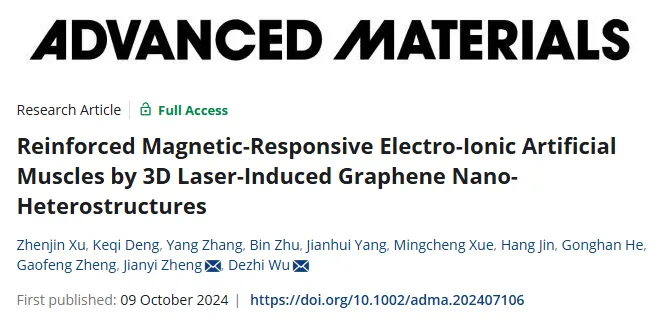3D Laser-Induced Graphene Nano-Heterostructures for Magnetic-Responsive Artificial Muscles – Xiamen University
Overview
Researchers from Xiamen University, led by Jianyi Zheng and Prof. Dezhi Wu, have developed magnetic-responsive electro-ionic artificial muscles using 3D laser-induced graphene (LIG) nanostructures. This breakthrough study, published in Advanced Materials under the title “Reinforced Magnetic-Responsive Electro-Ionic Artificial Muscles by 3D Laser-Induced Graphene Nano-Heterostructures,” introduces a one-step laser-patterning process to produce electro- and magnetically active electrodes. These electrodes incorporate cobalt-phosphorous (Co/P)-doped core-shell nanoparticles within the LIG framework, enabling dual-mode response for soft actuators.
The innovative design of the nano-heterostructures facilitates efficient electron/ion transport and achieves multi-modal actuation at low voltages. This technology offers promising applications in biomedical soft robotics, where precise movement and control are essential for stem cell differentiation and cell proliferation.
Research Highlights
- Nano-heterostructured electrodes:The team designed Co(Ox/Px)@P-LIG nanocomposites, which enhance ion transport across the electrode-electrolyte interface, improving actuator performance.
- Outstanding actuation capabilities:At ±0.5 V, the actuator achieves 08 mm peak-to-peak displacement, and under 200 mT magnetic fields, the deflection doubles. Even at an ultra-low ±10 mV, it can detect 280 µm bending.
- Ultra-fast response and durability:The actuator responds within 38 s and maintains over 90% performance stability after 106,000 cycles, making it highly durable.
Key Figures and Visuals
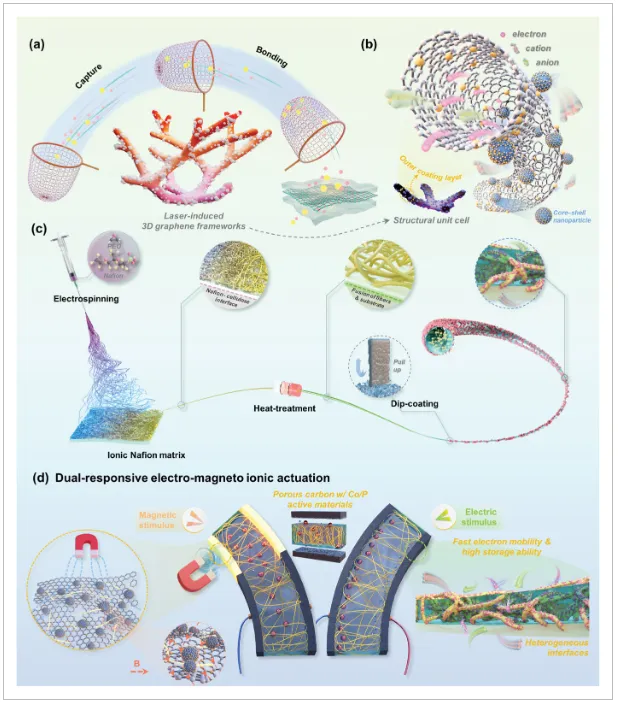
- Figure 1:Schematic of the electron/ion transport mechanism and dual-response actuation enabled by the Co(Ox/Px)-doped LIG structure.
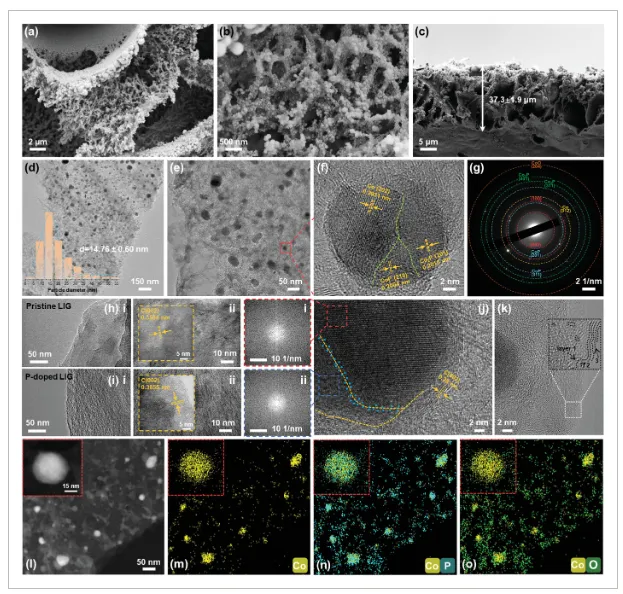
- Figure 2:Morphology and characterization of the Co(Ox/Px)@P-LIG nanostructures.
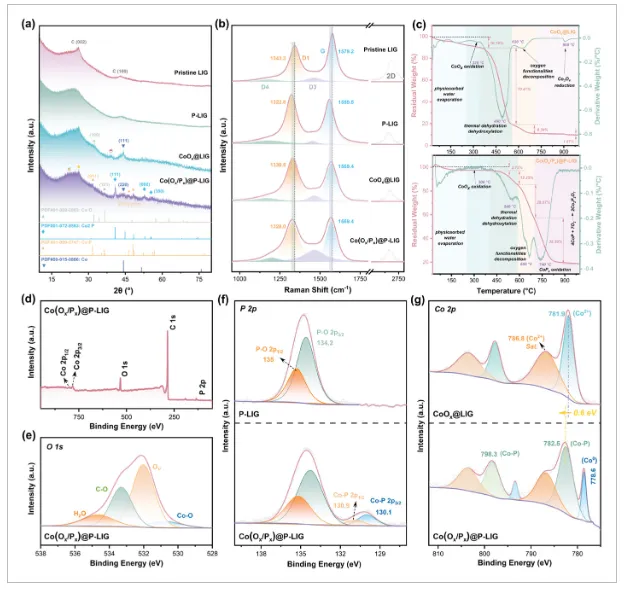
- Figure 3:Physical and chemical analysis of the Co/P-doped LIG electrodes.
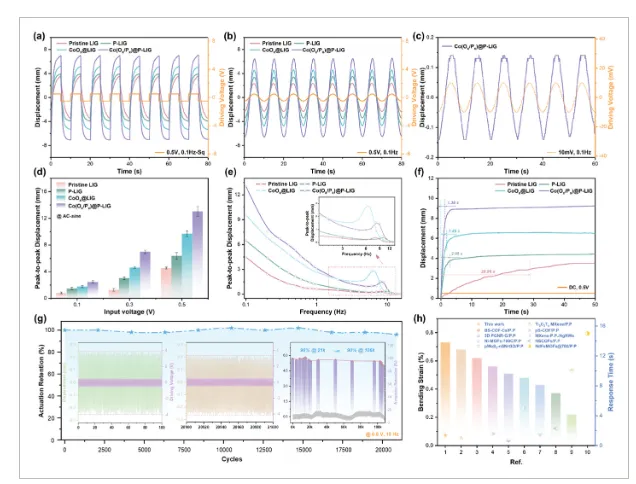
- Figure 4:Actuation performance of the Co(Ox/Px)@P-LIG-based actuator under electrical and magnetic stimuli.
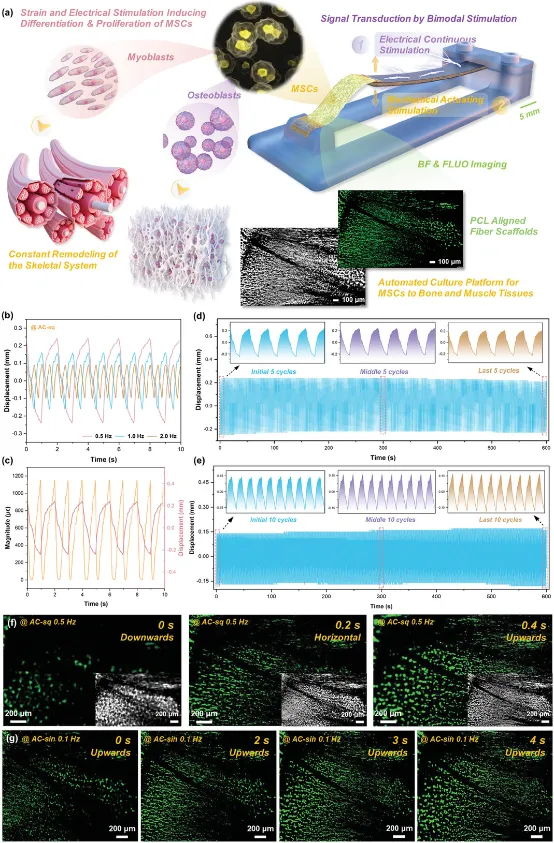
- Figure 5:Demonstration of the actuator’s application in promoting MSC (mesenchymal stem cell) proliferation through dual mechanical and electrical stimulation.
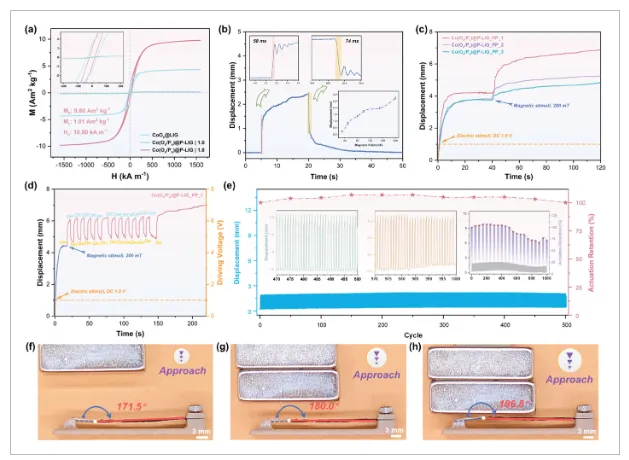
- Figure 6:Magnetic and electrical field-responsive actuation performance of the Co(Ox/Px)-doped LIG actuator.
Summary
The Co/P-doped LIG-based soft actuator integrates nano-heterostructures with a 3D graphene framework, significantly improving electron/ion transport and magnetic responsiveness. Key outcomes include:
- High surface capacitance:0 mF cm⁻², enabling improved actuation performance.
- Excellent magnetic properties:Saturation magnetization of 80 Am²/kg with low remanence and coercivity.
- Ultra-fast response and stability:38 s response time and minimal degradation over 106,000 cycles.
This actuator technology offers high-precision mechanical actuation while simultaneously providing electrical stimulation, making it ideal for biomedical applications. For instance, it can facilitate stem cell differentiation and growth on aligned fiber scaffolds.
Future Opportunities
The soft actuator platform shows immense potential in biomedical soft robotics, opening doors for:
- Next-generation wearable electronicsand prosthetics
- Biomedical devicesfor cell manipulation and tissue engineering
- Soft robotic systemswith enhanced multi-modal control for surgical applications
The study paves the way for further exploration of graphene-based soft robotics, combining magnetic, mechanical, and electrical stimuli to achieve highly efficient and adaptive actuation systems.
Reference
Zheng, J., Wu, D., et al. “Reinforced Magnetic-Responsive Electro-Ionic Artificial Muscles by 3D Laser-Induced Graphene Nano-Heterostructures.” Advanced Materials (2024). https://doi.org/10.1002/adma.202407106
